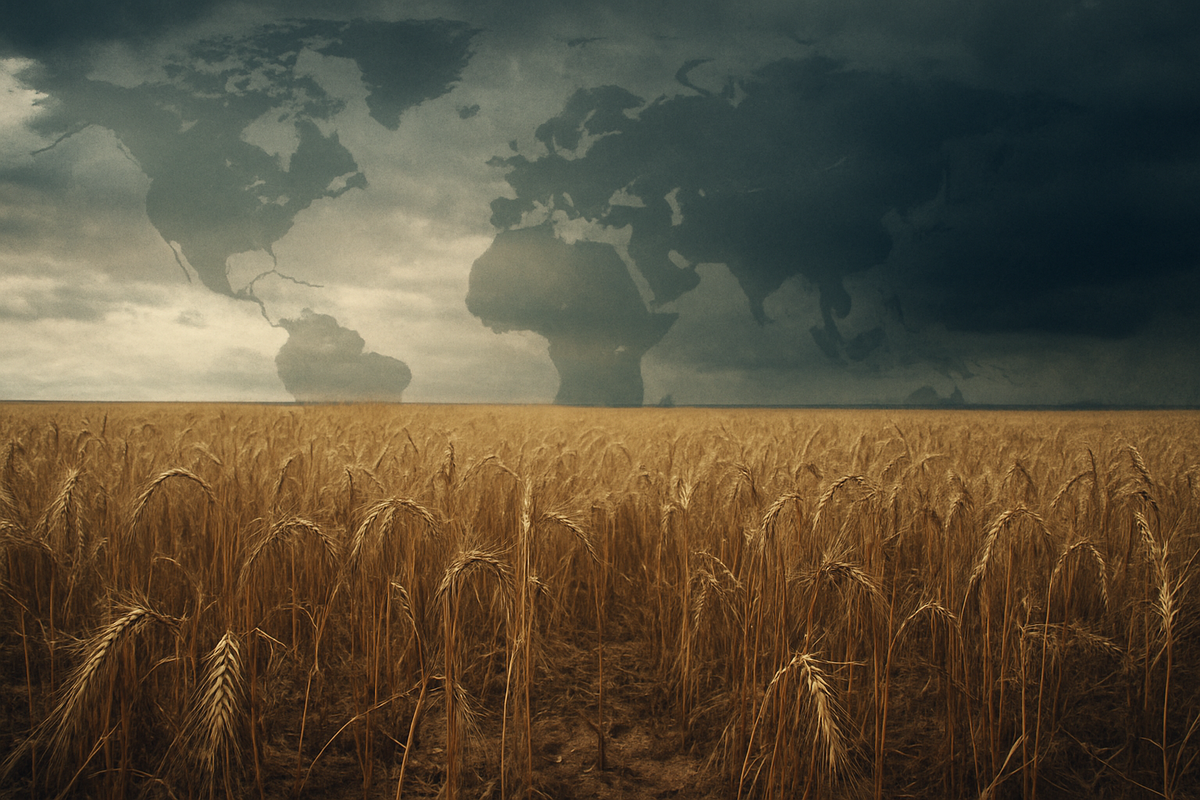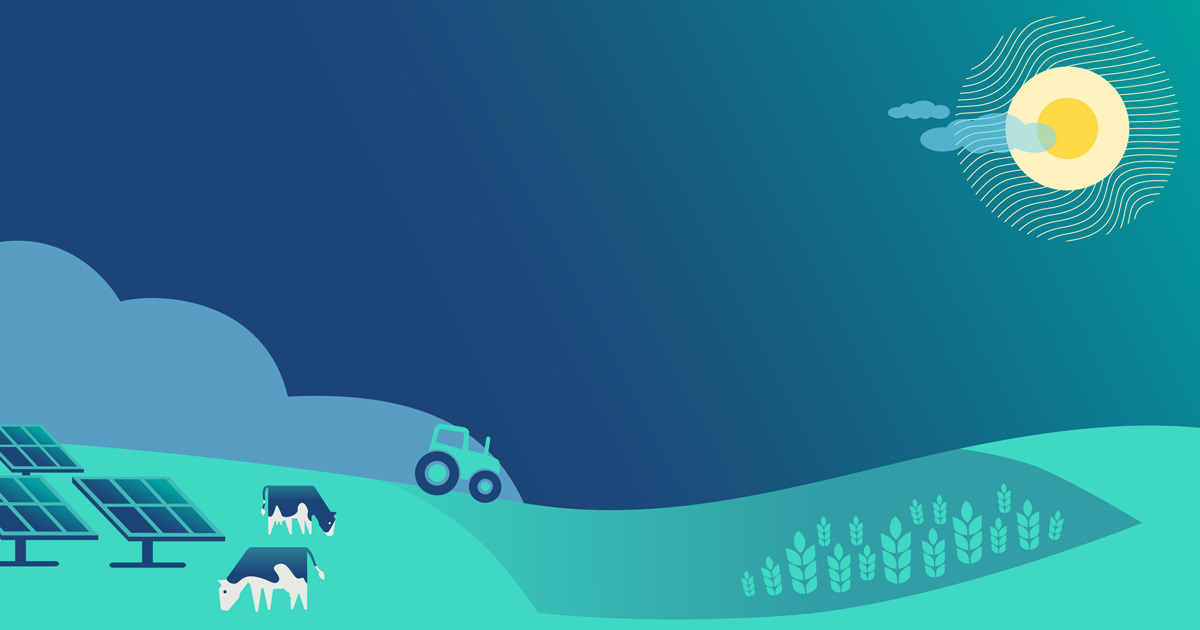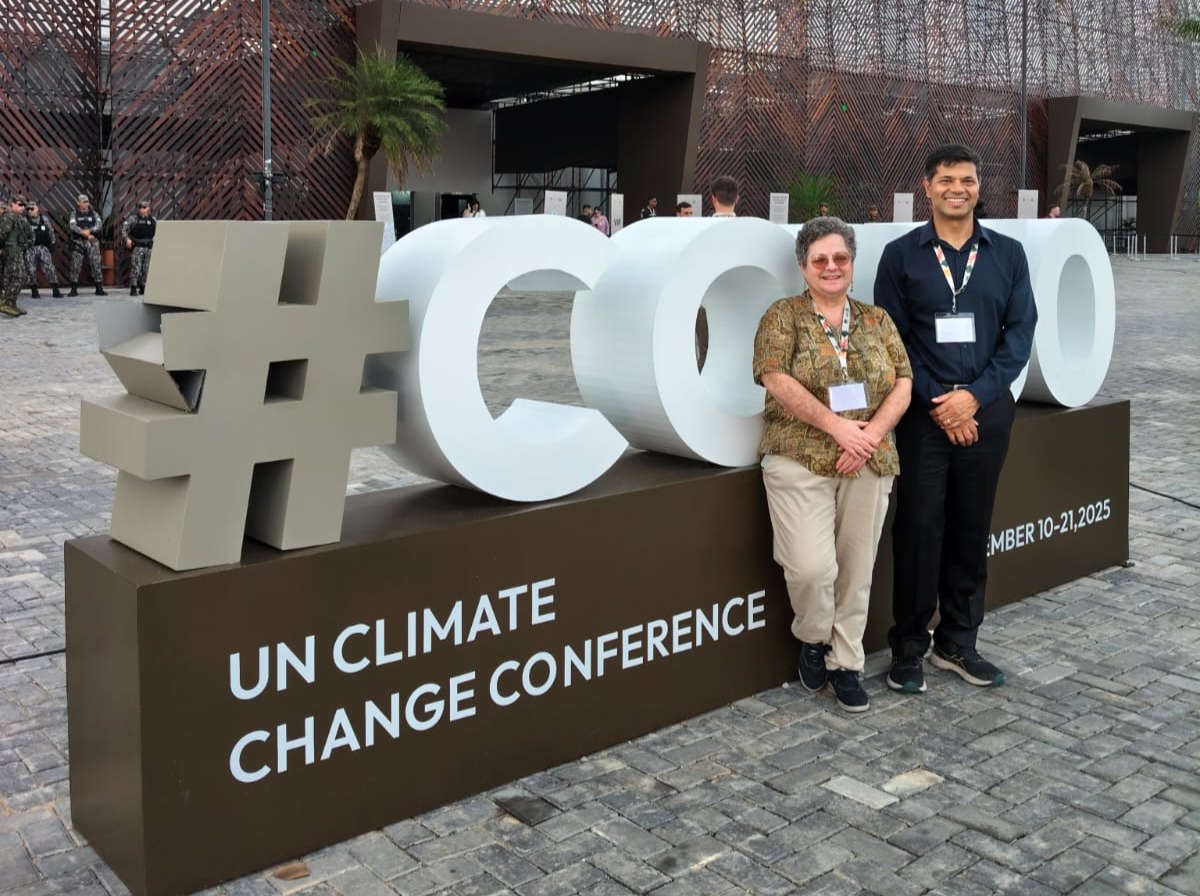Global Wheat Market Navigates Volatility Amidst Tight Supplies and Geopolitical Crosscurrents – FinancialContent

Report on Global Wheat Market Volatility and Sustainable Development Goal Implications
As of late 2025, the global wheat market is experiencing significant volatility, characterized by tight supplies and a critically low stocks-to-use ratio. This situation presents a direct challenge to the achievement of several United Nations Sustainable Development Goals (SDGs), particularly those related to poverty, hunger, climate action, and global partnerships. This report analyzes the market’s key drivers, corporate impacts, and wider socio-economic significance through the lens of the 2030 Agenda for Sustainable Development.
Analysis of Market Drivers and SDG Interconnections
The current market tightness is a result of multiple converging factors, each with profound implications for specific SDGs.
Geopolitical Conflict: A Setback for SDG 16 and SDG 2
The ongoing Russia-Ukraine conflict is a primary driver of market instability. The disruption to the Black Sea region, a vital global grain artery, directly undermines global food systems.
- This conflict is a direct affront to SDG 16 (Peace, Justice and Strong Institutions), demonstrating how instability can have far-reaching humanitarian and economic consequences.
- The curtailment of Ukraine’s export capacity and the strategic policy decisions by Russia have tightened global supplies, threatening progress towards SDG 2 (Zero Hunger) by limiting the availability and accessibility of a staple food source for millions.
Climate Change and Extreme Weather: The Urgency of SDG 13
Severe and persistent weather events have devastated harvests in key producing regions, highlighting the vulnerability of global agriculture to a changing climate.
- Widespread droughts and excessive rainfall, which have reduced global yields, underscore the critical need for robust implementation of SDG 13 (Climate Action).
- These climate-induced shocks directly impact agricultural productivity, making the goal of achieving Zero Hunger (SDG 2) significantly more difficult.
National Policy Interventions: A Challenge to SDG 17
In response to domestic pressures, several nations have implemented protectionist trade policies, including export restrictions and import bans.
- These unilateral actions fragment the global market and intensify competition for scarce resources.
- Such policies run counter to the spirit of SDG 17 (Partnerships for the Goals), which advocates for a universal, rules-based, and equitable multilateral trading system to ensure global food security.
Corporate Sector Impacts and Alignment with SDG 12
The volatile market has created a divided corporate landscape, with performance contingent on position within the supply chain. This dichotomy raises questions about progress toward SDG 12 (Responsible Consumption and Production).
Beneficiaries of Market Volatility
Major grain trading houses and some agricultural input companies have capitalized on price discrepancies and supply disruptions. While profitable, this highlights a system where volatility can be beneficial to some actors, while simultaneously undermining broader food security goals.
- Grain Traders (e.g., ADM, Bunge): Leverage logistics and risk management to profit from volatility.
- Input Suppliers (e.g., Nutrien, Corteva): May see increased demand for products aimed at maximizing yields in a high-price environment.
Sectors Facing Headwinds
Companies reliant on wheat as a primary input face eroded profit margins and operational challenges, exposing the vulnerabilities within the food production system.
- Food Manufacturers (e.g., General Mills, Kellogg): Grapple with high raw material costs, which can lead to consumer price inflation.
- Livestock Feed Producers: Face increased costs, impacting the wider animal agriculture sector and contributing to food price inflation.
Wider Socio-Economic Significance and SDG Setbacks
The state of the wheat market has profound consequences that extend beyond the agricultural sector, directly impacting global economic stability and human well-being.
Threats to Global Food Security and SDG 2
The historically low stocks-to-use ratio (approx. 31%) leaves the global population highly vulnerable to supply shocks. Import-dependent developing nations are most at risk, facing potential food shortages and humanitarian crises. This represents a significant setback for achieving SDG 2 (Zero Hunger).
Inflationary Pressures and Impacts on SDG 1 and SDG 8
Rising wheat prices are a key contributor to global food price inflation. This trend has severe implications for two core SDGs:
- SDG 1 (No Poverty): Higher prices for essential food items disproportionately harm low-income households, increasing poverty and inequality.
- SDG 8 (Decent Work and Economic Growth): Broad-based inflation can slow economic growth, reduce consumer purchasing power, and create economic instability.
Future Outlook: Navigating Towards SDG-Aligned Resilience
The path forward requires strategic adaptation from all market participants to build a more resilient and sustainable global food system.
Short-Term Monitoring
Immediate focus will be on upcoming harvests, geopolitical developments in the Black Sea region, and national trade policies. These factors will determine near-term price movements and supply availability, directly influencing progress on the SDGs.
Long-Term Strategic Adaptations for Sustainability
Achieving long-term stability necessitates a shift towards practices that align with the Sustainable Development Goals.
- Climate-Resilient Agriculture (SDG 2, SDG 13): Increased investment in and adoption of drought-resistant crop varieties and sustainable farming practices.
- Supply Chain Diversification (SDG 12): Efforts by traders and manufacturers to reduce reliance on single regions and build more robust, localized, and transparent supply chains.
- Technological Innovation (SDG 9): Greater focus on agricultural technology to improve yields, optimize resource use, and enhance climate resilience.
- International Cooperation (SDG 17): A renewed commitment to multilateral trade agreements and global partnerships to ensure the free and fair flow of essential food commodities.
Conclusion: A Market Redefined by Risk and the Need for Resilience
The 2025 global wheat market demonstrates the deep interconnection between geopolitics, climate change, and the global economy. The current volatility is not merely a market condition but a symptom of systemic risks that threaten the foundations of the 2030 Agenda. The strain on global supplies directly jeopardizes SDG 2 (Zero Hunger) and SDG 1 (No Poverty), driven by failures to advance SDG 16 (Peace) and SDG 13 (Climate Action). Moving forward, building a resilient and equitable global food system is imperative and will depend on a collective commitment to the principles of sustainable development.
Analysis of Sustainable Development Goals in the Article
1. Which SDGs are addressed or connected to the issues highlighted in the article?
The article on the global wheat market touches upon several interconnected Sustainable Development Goals (SDGs). The analysis reveals connections to the following SDGs:
- SDG 2: Zero Hunger: This is the most central SDG addressed. The article’s core theme revolves around global food security, access to food, price volatility of a staple commodity, and the stability of food production systems.
- SDG 13: Climate Action: The article explicitly links climate change and extreme weather events to reduced agricultural productivity and supply disruptions, highlighting the direct impact of climate on food systems.
- SDG 1: No Poverty: The discussion on food price inflation and its disproportionate effect on lower-income households connects directly to poverty, as rising costs for essential goods erode purchasing power and can push vulnerable populations further into poverty.
- SDG 16: Peace, Justice and Strong Institutions: The article identifies geopolitical conflict, specifically the Russia-Ukraine war, as a primary driver of market instability and supply chain disruptions, linking the absence of peace directly to global food insecurity.
- SDG 17: Partnerships for the Goals: The article discusses the breakdown of global trade cooperation through protectionist policies like export bans and tariffs. This highlights challenges to the global partnership for sustainable development, particularly in maintaining open and fair trade systems for food commodities.
2. What specific targets under those SDGs can be identified based on the article’s content?
Based on the issues discussed, several specific SDG targets can be identified:
-
SDG 2: Zero Hunger
- Target 2.1: By 2030, end hunger and ensure access by all people, in particular the poor and people in vulnerable situations, including infants, to safe, nutritious and sufficient food all year round. The article directly addresses this by highlighting “heightened concerns for global food security, particularly in import-dependent nations” and how price spikes affect access to staple foods like bread and pasta for “lower-income households.”
- Target 2.4: By 2030, ensure sustainable food production systems and implement resilient agricultural practices that increase productivity and production, that help maintain ecosystems, that strengthen capacity for adaptation to climate change, extreme weather, drought, flooding and other disasters and that progressively improve land and soil quality. The article points to the need for this by describing how extreme weather has “wreaked havoc on harvests” and mentioning the potential for investment in “resilient crop varieties” and “climate resilience” as a strategic adaptation.
- Target 2.c: Adopt measures to ensure the proper functioning of food commodity markets and their derivatives and facilitate timely access to market information, including on food reserves, in order to help limit extreme food price volatility. The entire article is a commentary on the failure to meet this target, detailing “persistent price volatility,” the impact of “export restrictions” and “import bans,” and the fragmentation of the global market.
-
SDG 13: Climate Action
- Target 13.1: Strengthen resilience and adaptive capacity to climate-related hazards and natural disasters in all countries. The article provides clear examples of this challenge, stating that “extreme weather events have wreaked havoc on harvests worldwide,” citing “persistent droughts” and “excessive rainfall” as direct causes of reduced production. It notes these events are “exacerbated by long-term climate change impacts.”
-
SDG 16: Peace, Justice and Strong Institutions
- Target 16.1: Significantly reduce all forms of violence and related death rates everywhere. The article establishes a direct link between conflict and the disruption of essential systems, identifying the “ongoing Russia-Ukraine conflict” as a “paramount factor” that has “significantly curtailed” Ukraine’s production and export capacity, thereby destabilizing global food supplies.
3. Are there any indicators mentioned or implied in the article that can be used to measure progress towards the identified targets?
Yes, the article mentions several quantitative and qualitative indicators that can be used to measure progress:
-
Indicators for SDG 2 (Zero Hunger)
- World stocks-to-use ratio: The article specifies this ratio is “around 31% for the 2024/25 marketing year,” describing it as a “critically low” level that offers little buffer. This is a direct indicator of food supply stability (Target 2.c).
- Global ending stocks: Mentioned as hovering “near a decade low,” this is a key metric for assessing the availability of food reserves (Target 2.c).
- Food price volatility/inflation: The article repeatedly refers to “persistent price volatility” and “inflationary pressures on food prices,” which are direct measures of market instability and food affordability (Targets 2.1 and 2.c).
- Prevalence of trade-restrictive policies: The mention of “export restrictions” by India, an “export quota” by Russia, and an “import ban” by Turkey serve as indicators of market fragmentation and lack of cooperation (Target 2.c).
-
Indicators for SDG 13 (Climate Action)
- Impact on agricultural yields: The article provides a specific metric: “global wheat yields [have been] reduced by an estimated 10% compared to a scenario without climate change.” This quantifies the impact of climate-related hazards on food production (Target 13.1).
- Frequency and impact of extreme weather events: The article cites specific instances like the “67-year low in wheat production” in Kansas due to drought and a “22% harvest decline” in Australia, serving as qualitative and quantitative indicators of the impact of climate-related disasters (Target 13.1).
-
Indicators for SDG 16 (Peace, Justice and Strong Institutions)
- Impact of conflict on agricultural land and production: The article states that in Ukraine, “cultivated land [was] reduced by approximately 20%.” This is a direct indicator of how conflict physically impairs a country’s food production capacity (Target 16.1).
4. Summary Table of SDGs, Targets, and Indicators
| SDGs | Targets | Indicators Identified in the Article |
|---|---|---|
| SDG 2: Zero Hunger |
2.1: Ensure access to sufficient food.
2.4: Ensure sustainable and resilient food production. 2.c: Ensure proper functioning of food commodity markets and limit price volatility. |
– World stocks-to-use ratio (around 31%). – Global ending stocks (near a decade low). – Persistent food price volatility and inflationary pressures. – Implementation of export restrictions/quotas and import bans. – Need for investment in resilient crop varieties. |
| SDG 13: Climate Action | 13.1: Strengthen resilience and adaptive capacity to climate-related hazards. |
– Global wheat yields reduced by an estimated 10% due to climate change. – Specific instances of crop devastation from extreme weather (droughts in U.S., Australia; excessive rain in Europe). |
| SDG 16: Peace, Justice and Strong Institutions | 16.1: Significantly reduce all forms of violence. |
– Reduction of cultivated land in Ukraine by approximately 20% due to conflict. – Disruption of Black Sea grain trade due to the Russia-Ukraine conflict. |
Source: markets.financialcontent.com
What is Your Reaction?
 Like
0
Like
0
 Dislike
0
Dislike
0
 Love
0
Love
0
 Funny
0
Funny
0
 Angry
0
Angry
0
 Sad
0
Sad
0
 Wow
0
Wow
0
















































:focal(1500,1000)/https://media.globalcitizen.org/a6/9a/a69a4720-d8a1-4715-b596-18738d03c05c/rotary_polio_hero_image.jpg?#)







/countries/sri-lanka/photo-credit---dmc-sri-lanka.tmb-1200v.jpg?sfvrsn=dc298bcc_1#)


















